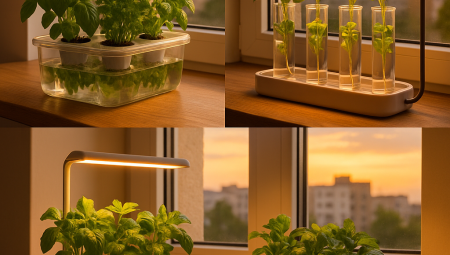Imagine a burst of vibrant color exploding in your garden, each bloom a miniature celebration. That’s the magic of the Firework Flower, botanically known as Pardancanda norrisii. This stunning perennial, a captivating hybrid of Iris domestica (formerly Belamcanda chinensis) and Pardanthopsis dichotoma, earns its dramatic name from its uniquely spotted, star-shaped petals that truly resemble exploding fireworks. As gardening trends in 2025 lean towards unique, low-maintenance, and visually impactful plants, learning how to grow a firework flower garden has become a top priority for home gardeners and landscape enthusiasts alike.
This comprehensive guide will equip you with all the knowledge needed to cultivate a spectacular display of Firework Flowers. We’ll delve into everything from choosing the right location to ensuring proper care, helping you achieve a dazzling garden that bursts with color from summer through fall.
What is a Firework Flower (Pardancanda norrisii)?
The Firework Flower is a captivating perennial known for its striking, iris-like blooms adorned with intricate spots and splashes of color, primarily in shades of yellow, orange, and red. Growing on tall, slender stems, these flowers create a dynamic, airy presence in any garden. Despite their exotic appearance, they are surprisingly hardy and adaptable, making them an excellent choice for a wide range of climates.
Why Grow a Firework Flower Garden? The Explosive Benefits
Beyond their undeniable beauty, integrating Firework Flowers into your landscape offers several compelling advantages:
1. Unmatched Visual Appeal
The “firework” effect of their blooms is truly unique. Each petal often displays contrasting spots or blotches, creating a dynamic visual texture that draws the eye. They add a whimsical yet sophisticated touch to borders, rock gardens, and perennial beds.
2. Extended Blooming Season
Unlike many summer-blooming perennials, Firework Flowers boast an impressively long blooming period, typically from mid-summer well into the fall. This ensures continuous color and interest in your garden when many other plants start to fade.
3. Low Maintenance and Drought Tolerance
Once established, Pardancanda norrisii is remarkably low-maintenance. It’s relatively drought-tolerant, making it a sustainable choice for gardeners conscious of water usage, a growing consideration in 2025’s climate-aware gardening. They also resist most common pests and diseases.
4. Attracts Pollinators
These vibrant blooms are not just pretty faces; they also attract beneficial pollinators like bees and butterflies to your garden, contributing to a healthier ecosystem.
5. Excellent Cut Flowers
The elegant, long stems make Firework Flowers perfect for cut flower arrangements. Bring the garden’s explosive beauty indoors for a stunning display.
Essential Steps to Grow a Firework Flower Garden Successfully
Cultivating a thriving firework flower garden is straightforward if you provide the right conditions. Follow these steps for optimal growth and abundant blooms.
1. Choosing the Right Location and Soil
1.1 Sunlight Requirements
Firework Flowers thrive in full sun, meaning at least 6-8 hours of direct sunlight per day. While they can tolerate partial shade, too little sun will result in fewer blooms and leggy growth.
1.2 Soil Preparation
Well-draining soil is paramount for Pardancanda norrisii. They are intolerant of soggy conditions, which can lead to rot.
- Ideal pH: Slightly acidic to neutral (pH 6.0-7.0).
- Texture: Loamy or sandy soil is preferred. If your soil is heavy clay, amend it generously with organic matter like compost, aged manure, or bark chips to improve drainage and aeration. Raised beds are an excellent option for heavy clay soils.
2. Planting Firework Flowers
You can plant Firework Flowers from seeds, bare roots, or potted plants.
2.1 Planting from Seeds
- Timing: Start seeds indoors 8-10 weeks before the last frost date, or sow directly outdoors after all danger of frost has passed in spring.
- Process: Sow seeds shallowly, about 1/4 inch deep. Light is often required for germination, so press them lightly into the soil. Keep the soil consistently moist until germination, which can take anywhere from 2 weeks to a few months. Cold stratification (exposing seeds to cold temperatures) for 3-4 weeks can improve germination rates.
2.2 Planting Bare Roots or Potted Plants
- Timing: Plant bare roots in early spring. Potted plants can be transplanted from spring through early fall.
- Process: Dig a hole twice as wide as the root ball and just as deep. Place the plant in the hole so that the top of the root ball is level with the surrounding soil. Backfill with amended soil, gently firming around the base. Water thoroughly after planting.
- Spacing: Space plants 12-18 inches apart to allow for mature growth and good air circulation.
3. Watering and Fertilizing
3.1 Watering Needs
- Establishment: During their first growing season, keep the soil consistently moist (but not waterlogged) to help the plants establish a strong root system.
- Mature Plants: Once established, Firework Flowers are drought-tolerant and prefer drier conditions. Water deeply but infrequently, allowing the soil to dry out completely between waterings. Overwatering is a common cause of issues.
3.2 Fertilization
- Minimal Needs: These plants are not heavy feeders. In rich, well-amended soil, they may not need any additional fertilizer.
- Optional: If your soil is poor, you can apply a balanced, slow-release granular fertilizer in early spring. Avoid high-nitrogen fertilizers, which promote leafy growth at the expense of blooms.
4. Pruning and Maintenance
4.1 Deadheading
Deadhead spent blooms regularly to encourage more flowering and prevent the plant from self-seeding excessively. Simply snip off the faded flower stalk at its base.
4.2 Winter Care (Hardiness)
Firework Flowers are hardy in USDA Zones 5-10.
- Cold Climates (Zones 5-7): In colder regions, apply a layer of mulch (straw, leaves, or shredded bark) around the plant in late fall after the foliage dies back. This provides insulation and protects the rhizomes from freezing.
- Warmer Climates (Zones 8-10): In milder climates, minimal winter protection is needed. The foliage may persist or die back depending on the severity of winter.
4.3 Division
Over time, clumps may become crowded, leading to reduced flowering. Divide mature clumps every 3-5 years in early spring or fall. Carefully dig up the plant, separate the rhizomes, and replant.
Common Challenges and Solutions for Your Firework Flower Garden
While generally robust, Firework Flowers can occasionally face issues.
1. Pests
- Generally Resistant: Firework Flowers are highly resistant to most common garden pests.
- Occasional Aphids: In rare cases, aphids may appear on new growth. A strong spray of water or an application of insecticidal soap can usually resolve this.
2. Diseases
- Root Rot: The most common issue is root rot, caused by consistently wet or poorly draining soil. Ensure proper drainage is always the priority.
- Leaf Spot/Rust: Fungal diseases like leaf spot or rust are uncommon but can occur in prolonged wet and humid conditions. Ensure good air circulation. Remove and dispose of affected foliage.
3. Lack of Blooms
If your Firework Flowers aren’t blooming, consider these factors:
- Insufficient Sunlight: The most common reason. Ensure they receive at least 6-8 hours of direct sun.
- Too Much Nitrogen Fertilizer: High nitrogen promotes lush foliage at the expense of flowers. Use a balanced or low-nitrogen fertilizer if needed.
- Immature Plants: Seed-grown plants might take 2-3 years to flower profusely.
- Overcrowding: If mature clumps are very dense, they may need division.
Pro Tips for an Exploding Firework Flower Garden in 2025
- Plant in Mass for Impact: For the most dramatic “firework” display, plant Firework Flowers in groups or drifts rather than single specimens. This amplifies their visual effect.
- Combine with Contrasting Textures: Pair them with plants that have contrasting foliage or bloom shapes, like ornamental grasses (e.g., Little Bluestem), coneflowers, or salvias, to enhance their unique form.
- Consider Container Growing: If you have heavy clay soil or limited garden space, Firework Flowers thrive in large containers, provided they have excellent drainage. Use a good quality potting mix.
- Embrace Self-Seeding (or Control It): Firework Flowers can self-seed readily. If you want more plants, let some seed heads mature. If you prefer to control spread, deadhead diligently.
- Utilize for Late Season Color: Plan your garden to feature Firework Flowers prominently in late summer and fall when other plants are fading. They’re excellent partners for asters and sedum.
- Harvest Seeds for Propagation: If you enjoy propagating, collect the glossy black seeds that develop in seed pods after flowering. Sow them for new plants next season.
Frequently Asked Questions (FAQ)
Q1: Are Firework Flowers invasive?
A1: No, Firework Flowers (Pardancanda norrisii) are generally not considered invasive. While they can self-seed, especially if spent blooms aren’t deadheaded, their spread is usually manageable within a garden setting. They don’t typically outcompete native plants aggressively or spread via aggressive root systems like some truly invasive species. You can easily control their spread by deadheading or by transplanting volunteer seedlings.
Q2: How tall do Firework Flowers grow?
A2: Firework Flowers typically grow to a height of 2 to 3 feet (60-90 cm), with their slender flower stalks reaching even taller, up to 4 feet (1.2 meters) in ideal conditions. Their foliage forms a clump closer to the ground, usually around 1-1.5 feet (30-45 cm) wide. This makes them excellent choices for the middle or back of a border, providing vertical interest without being overly bulky.
Q3: Can Firework Flowers be grown from bulbs or rhizomes?
A3: Firework Flowers primarily grow from rhizomes, which are thickened underground stems. While they are often sold as potted plants, you can also purchase and plant bare rhizomes in the spring. They are not true bulbs like tulips or daffodils. The rhizomatous nature contributes to their perennial habit and ease of division.
Q4: Are Firework Flowers deer or rabbit resistant?
A4: Yes, Firework Flowers are generally considered deer and rabbit resistant. Their foliage is not typically a preferred food source for these animals, making them a good choice for gardens in areas where deer or rabbits are a concern. However, no plant is entirely “deer-proof” if food sources are scarce.
Conclusion
Creating a firework flower garden is a rewarding endeavor that promises a spectacular display of color and unique beauty. By understanding their needs for full sun, well-draining soil, and minimal care, you can effortlessly incorporate Pardancanda norrisii into your landscape. These resilient and captivating perennials will ensure your garden remains a vibrant, celebratory space, bursting with the visual excitement of a summer fireworks show, season after season.
Are you ready to add the explosive beauty of Firework Flowers to your garden? Share your planting plans or any experiences with these stunning blooms in the comments below!



